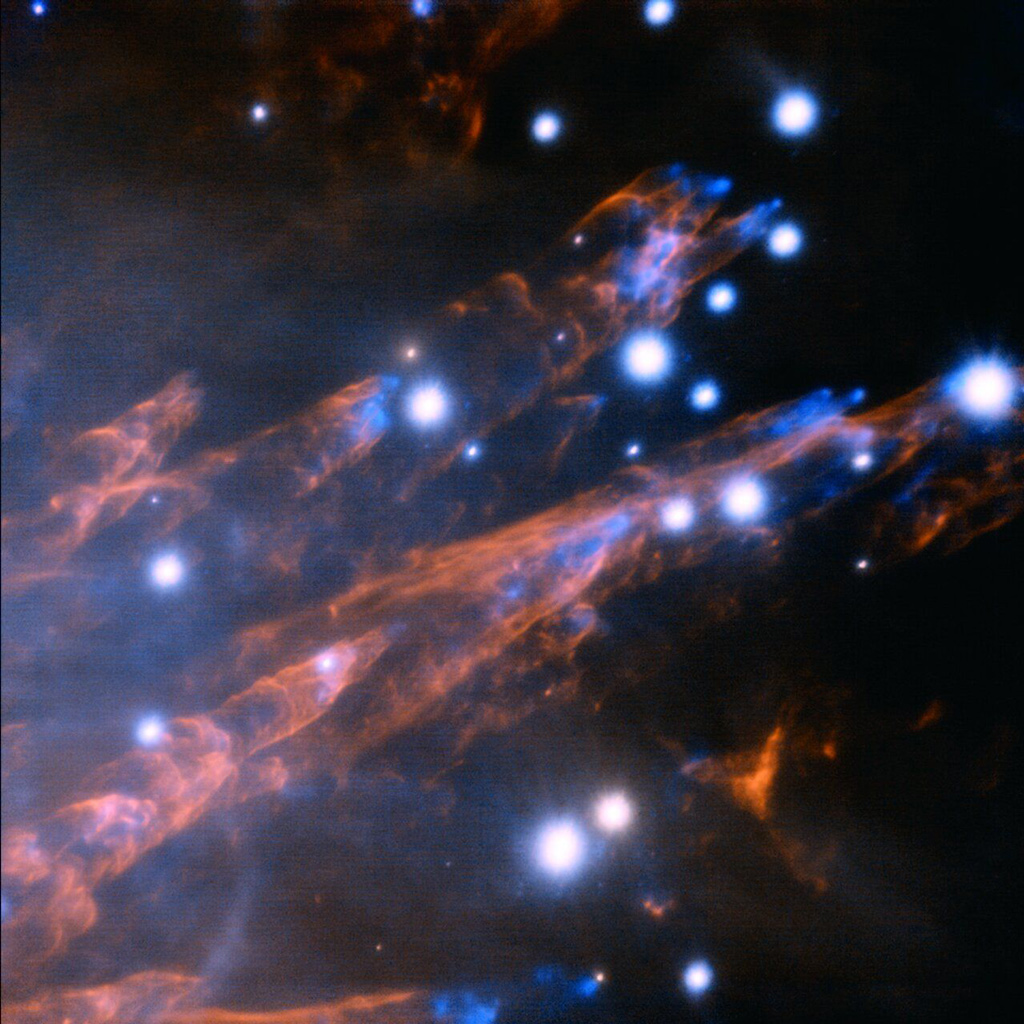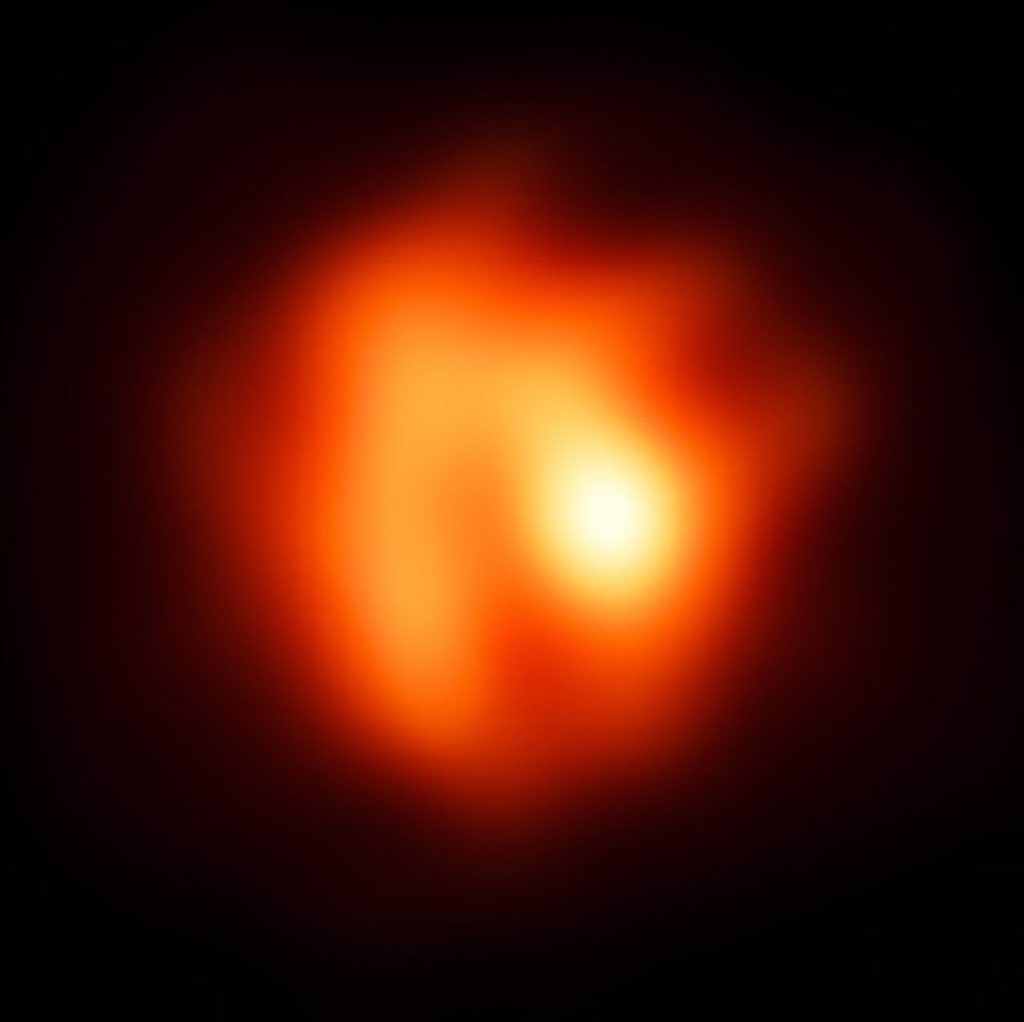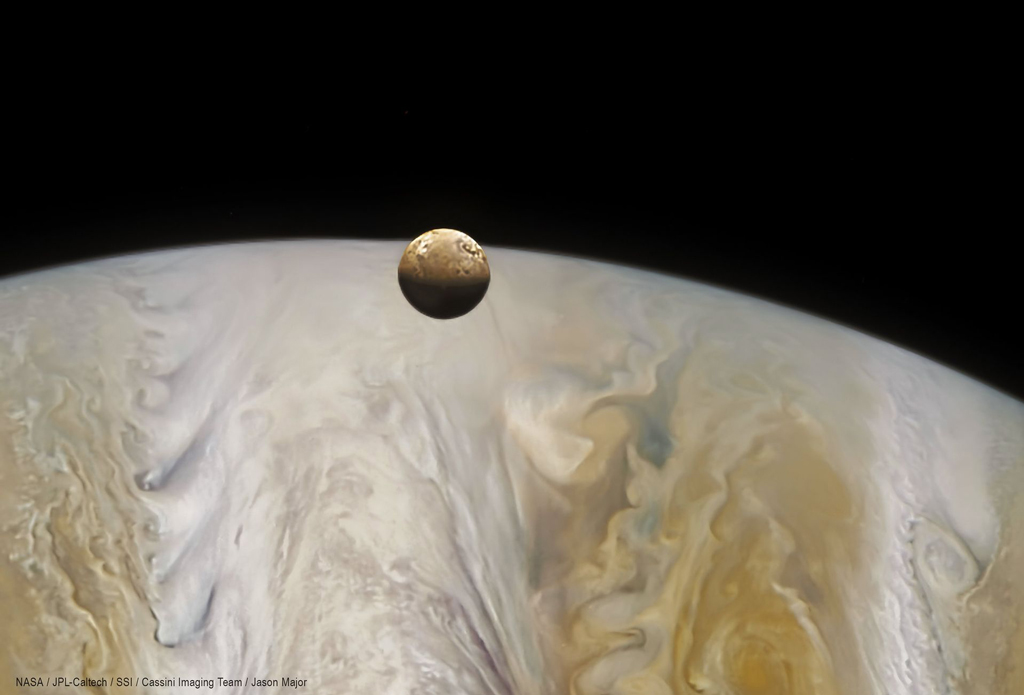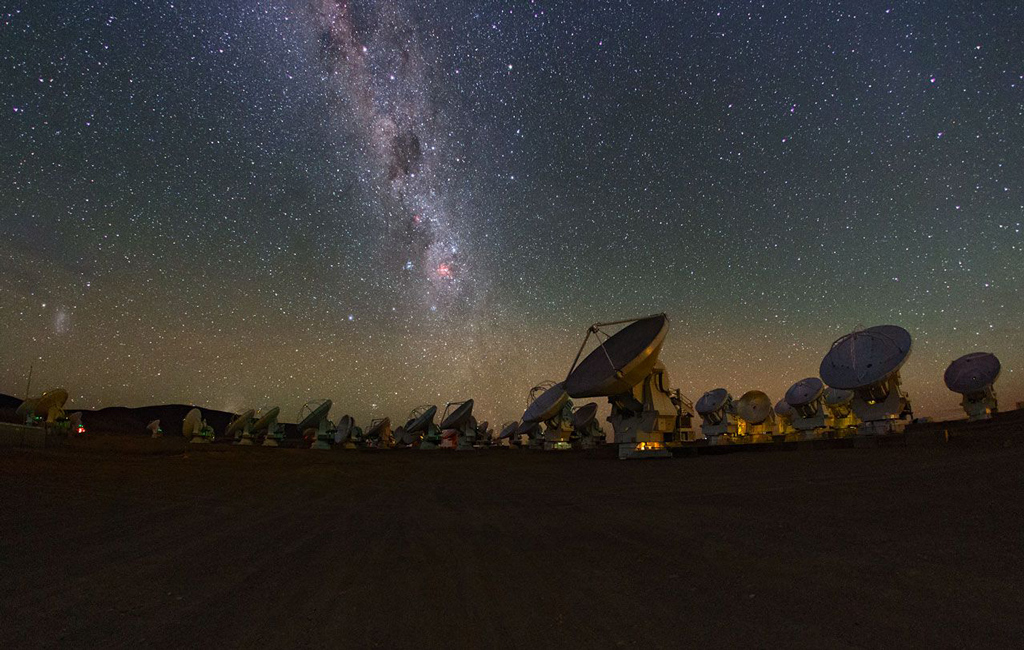
Planetary Picture of the Day
Week of July 24, 2023
A Mars panorama, 'bullets' in Orion, and Io with Jupiter.
Monday, July 24, 2023

Orion Bullets
This composite image at infrared wavelengths was obtained using the Gemini North laser guide star system in conjunction with the ALTAIR adaptive optics system and the NIRI near-infrared imager. The image shows the Orion "bullets" as blue features and represents the light emitted by hot iron (Fe) gas. The light from the wakes, shown in orange, is from excited hydrogen gas. This image brings into focus a remarkably detailed view of supersonic “bullets” of gas and the wakes created as they pierce through clouds of molecular hydrogen in the famous Orion Nebula. The image was made possible with laser guide star adaptive optics technology that corrects in real-time for image distortions caused by the Earth’s atmosphere.
Tuesday, July 25, 2023

A Red Giant Sheds its Skin
This ghostly image features a distant and pulsating red giant star known as R Sculptoris. Situated 1200 light-years away in the constellation of Sculptor, R Sculptoris is something known as a carbon-rich asymptotic giant branch (AGB) star, meaning that it is nearing the end of its life. At this stage, low- and intermediate-mass stars cool off, create extended atmospheres, and lose a lot of their mass — they are on their way to becoming spectacular planetary nebulae.
While the basics of this mass-loss process are understood, astronomers are still investigating how it begins near the surface of the star. The amount of mass lost by a star actually has huge implications for its stellar evolution, altering its future, and leading to different types of planetary nebulae. As AGB stars end their lives as planetary nebulae, they produce a vast range of elements — including 50% of elements heavier than iron — which are then released into the Universe and used to make new stars, planets, moons, and eventually the building blocks of life.
One particularly intriguing feature of R Sculptoris is its dominant bright spot, which looks to be two or three times brighter than the other regions. The astronomers that captured this wonderful image, using ESO’s Very Large Telescope Interferometer (VLTI), have concluded that R Sculptoris is surrounded by giant “clumps” of stellar dust that are peeling away from the shedding star. This bright spot is, in fact, a region around the star with little to no dust, allowing us to look deeper into the stellar surface.
This image captures an extremely small section of the sky: approximately 20x20 milliarcseconds. For comparison, Jupiter has an angular size of approximately 40 arcseconds.
Wednesday, July 26, 2023

Io in Front of Jupiter
This color-composite image of Jupiter and its moon Io is made from data acquired by NASA's Cassini spacecraft on January 1, 2001.
Thursday, July 27, 2023

Milky Way over ALMA
The Milky Way glitters above the ALMA array in this image taken from a time lapse sequence during the ESO Ultra HD Expedition.
Friday, July 28, 2023

Curiosity, Sol 762
This image of Mars was taken on sol 762 of NASA's Curiosity rover mission, using Mastcam-Z, back in September 2014.





